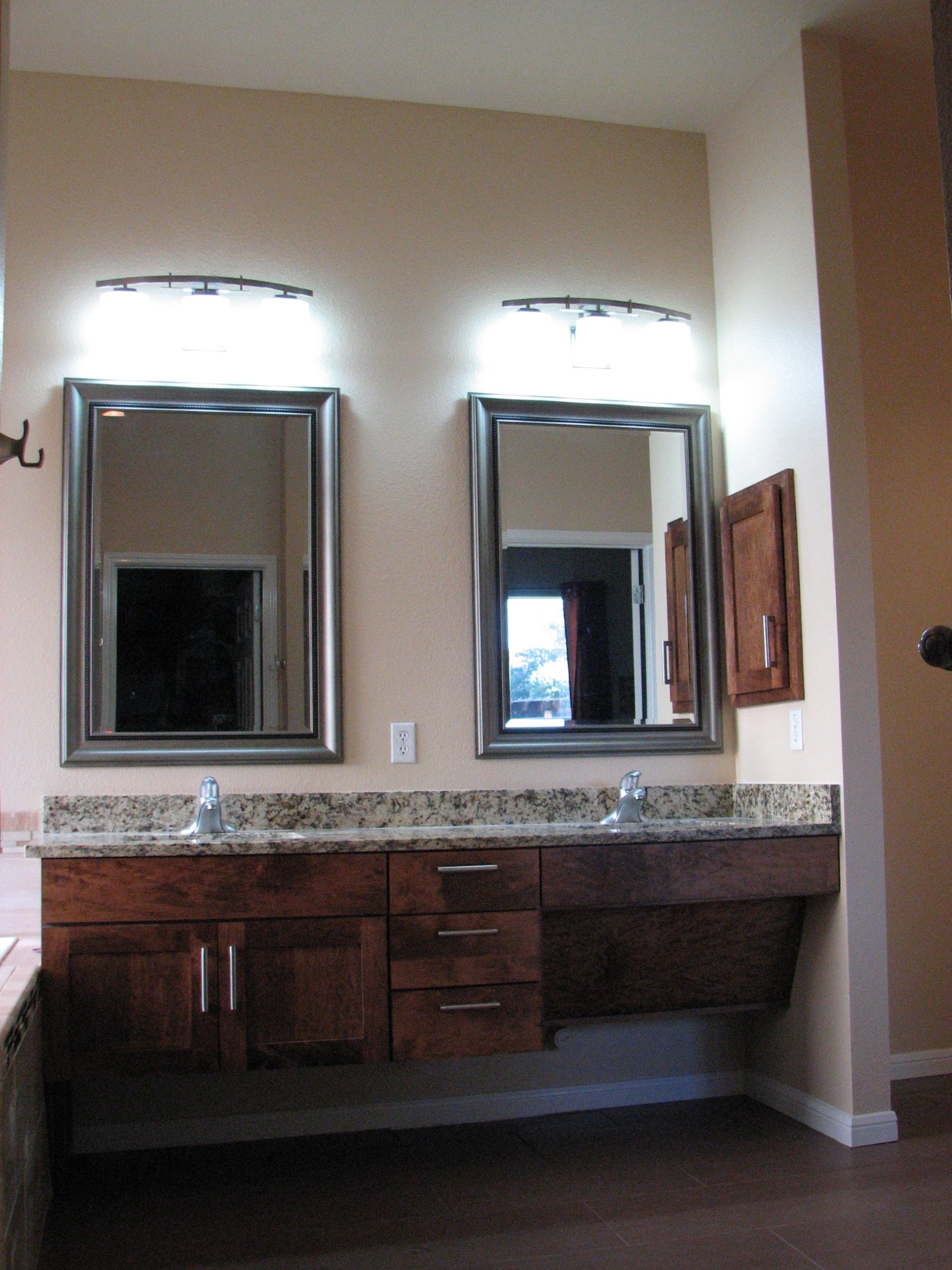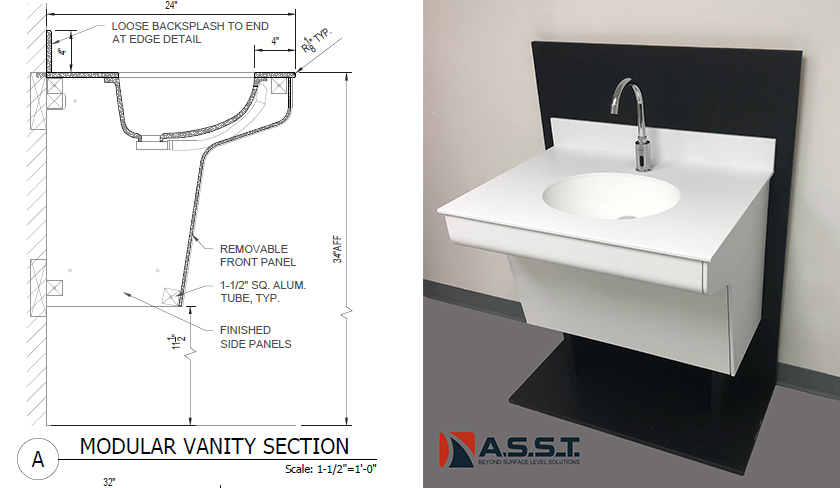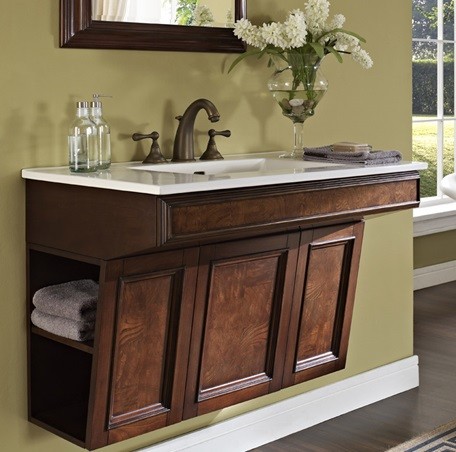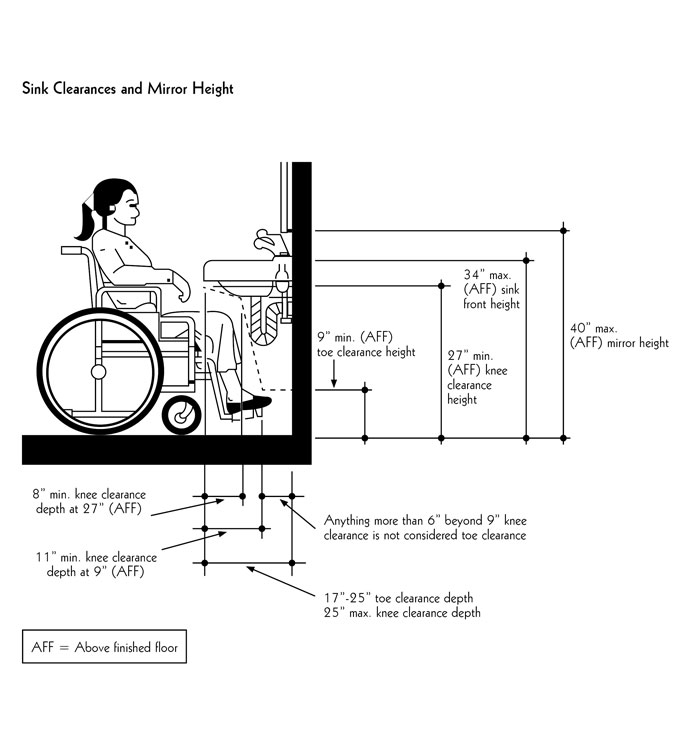Understanding ADA Compliance: The Importance of Accessible Bathroom Sink Vanities
When it comes to designing a bathroom, accessibility should be a top priority. ADA compliance ensures that individuals with disabilities can use and navigate the space comfortably and safely. One crucial element of an accessible bathroom is the sink vanity. In this article, I will delve into the importance of ADA compliant bathroom sink vanities and why they are essential for creating an inclusive environment.
First and foremost, ADA compliant bathroom sink vanities promote independence. They are designed to accommodate individuals with limited mobility, making it easier for them to perform daily tasks independently. The proper height and clearance underneath the sink vanity allow for wheelchair users to comfortably access the sink, promoting self-sufficiency and dignity.
Secondly, accessible sink vanities ensure safety. With features such as rounded edges and smooth surfaces, they minimize the risk of accidents and injuries. Additionally, ADA compliant vanities are designed to withstand heavy loads, providing stability and preventing tipping or collapsing. This is particularly important for individuals who may need to lean on the sink for support.
Moreover, ADA compliance promotes inclusivity. By installing accessible sink vanities, you create a welcoming environment for all individuals, regardless of their abilities. This fosters a sense of equality and respect, ensuring that everyone feels comfortable and valued in your space. Remember, accessibility benefits not only individuals with disabilities but also elderly individuals and parents with young children.

Designing an ADA Compliant Bathroom: Key Considerations for Choosing the Right Sink Vanity
Designing an ADA compliant bathroom requires careful consideration and attention to detail. When it comes to choosing the right sink vanity, several key factors should be taken into account. In this article, I will guide you through the essential considerations to ensure that your bathroom design meets ADA standards and provides a functional and stylish space.
Firstly, the height of the sink vanity is crucial. ADA guidelines state that the top of the sink should be no higher than 34 inches from the floor. This ensures that individuals in wheelchairs can comfortably reach the sink and perform necessary tasks. It is essential to measure the height carefully to ensure compliance.
Another important consideration is the clearance underneath the sink vanity. ADA guidelines require a minimum clearance of 27 inches from the floor to the bottom of the sink. This allows wheelchair users to roll under the sink and access it comfortably. Ensure that the plumbing fixtures are properly placed to allow for adequate clearance.
Additionally, the sink should have an appropriate depth to prevent water splashing onto the floor. ADA guidelines recommend a maximum depth of 6 ½ inches to minimize the risk of accidents and ensure easy reach for individuals with limited mobility. Choosing a sink with a shallow depth will not only meet ADA requirements but also enhance usability.
Furthermore, it is essential to consider the type of faucet and controls for the sink vanity. ADA guidelines specify that faucets should be easy to operate with one hand and require minimal force. Lever handles or touchless faucets are excellent choices as they are user-friendly and accessible for individuals with limited dexterity or strength.
Features to Look for in an ADA Compliant Bathroom Sink Vanity
When it comes to choosing an ADA compliant bathroom sink vanity, several key features should be considered. These features ensure that the sink vanity meets the necessary accessibility requirements while providing functionality and convenience. In this article, I will highlight the essential features to look for when selecting an ADA compliant bathroom sink vanity.
First and foremost, the sink vanity should have a clear knee space underneath. This allows individuals in wheelchairs to comfortably roll up to the sink and use it without any obstruction. The knee space should have a minimum height of 27 inches and a depth of at least 8 inches, providing ample room for wheelchair users to maneuver.
Additionally, the sink vanity should have a smooth and rounded front edge. This prevents injuries and ensures safety, especially for individuals with limited mobility or visual impairments. Avoid sharp or jagged edges that may cause harm and opt for vanities with soft, curved edges for a more accessible design.
Another important feature to consider is the faucet and controls. ADA compliant sink vanities should have easily operable and accessible faucets that can be controlled with one hand and require minimal force. Lever handles or touchless faucets are excellent options as they provide convenience and accessibility for individuals with varying abilities.
Furthermore, a properly sized and positioned mirror is essential for an ADA compliant bathroom sink vanity. The mirror should be installed at a height that allows users to see themselves clearly while seated or standing. It should also be tilted or angled to accommodate individuals of different heights and ensure a comfortable viewing angle.
Installation and Placement Guidelines for ADA Compliant Bathroom Sink Vanities
Installing an ADA compliant bathroom sink vanity requires careful consideration of placement and adherence to specific guidelines. Proper installation ensures that the sink vanity meets accessibility requirements and provides a safe and functional environment for individuals with disabilities. In this article, I will guide you through the essential installation and placement guidelines for ADA compliant bathroom sink vanities.
Firstly, it is crucial to ensure that the sink vanity is installed at the appropriate height. ADA guidelines specify that the top of the sink should be no higher than 34 inches from the floor. This ensures that individuals in wheelchairs can comfortably reach the sink and perform necessary tasks. Carefully measure and adjust the height during installation to ensure compliance.
Another important consideration is the clearance underneath the sink vanity. ADA guidelines require a minimum clearance of 27 inches from the floor to the bottom of the sink. This allows wheelchair users to roll under the sink and access it comfortably. Ensure that the plumbing fixtures are properly placed to allow for adequate clearance and easy maneuverability.
Additionally, it is essential to provide sufficient knee space on either side of the sink vanity. ADA guidelines recommend a minimum width of 30 inches for this knee space. This ensures that individuals in wheelchairs have enough room to comfortably position themselves in front of the sink. Proper knee space allows for easy access and promotes independence.
Furthermore, during installation, ensure that the sink vanity is securely anchored to the wall or floor to prevent tipping or collapsing. ADA compliant sink vanities are designed to withstand heavy loads and provide stability. Follow the manufacturer’s guidelines and use appropriate anchors or braces to ensure a secure and safe installation.
Enhancing Accessibility and Style
Incorporating ADA compliant sink vanities in your bathroom design not only enhances accessibility but also adds style and functionality to your space. With a thoughtful approach, you can create a bathroom that is both inclusive and visually appealing. In this article, I will provide you with some tips on how to seamlessly integrate ADA compliant sink vanities into your bathroom design.
First, consider the style and design of the sink vanity itself. ADA compliant vanities come in a wide range of styles, materials, and finishes, allowing you to choose one that complements your overall bathroom aesthetic. From sleek and modern designs to more traditional or rustic styles, there are options available to suit any design preference.
Additionally, pay attention to the materials used in the construction of the sink vanity. Opt for durable materials such as solid surface, quartz, or stainless steel, which not only ensure longevity but also add a touch of sophistication to your bathroom. Consider the color and finish of the vanity to create a cohesive and visually pleasing look.
Furthermore, accessorize your sink vanity to enhance both accessibility and style. Install grab bars near the sink to provide additional support and stability for individuals with limited mobility. Choose stylish and functional faucets and controls that are easy to operate with one hand and require minimal force. Incorporate adequate lighting to ensure visibility and create a welcoming atmosphere.
Moreover, consider the overall layout and flow of your bathroom to maximize accessibility. Ensure that there is enough space around the sink vanity for easy maneuverability, especially for individuals in wheelchairs. Pay attention to the placement of other bathroom fixtures and accessories to create a well-balanced and functional space.
ADA Compliant Bathroom Vanity
ADA Wheelchair Accessible Vanity Cabinets Adaptive Living Store
Lacava Luxury Bathroom Sinks, Vanities, Tubs, Faucets, Bathroom
ADA Compliant Vanity Handicap bathroom design, Accessible
ASST Solid Surface Modular Vanity System™ is ADA Compliant ASST
Specialty ADA Compliant Vanities – Bathroom – Boston – by Vanity
ADA Compliant Vanity
ADA Compliant Bathroom: Sinks and Restroom Accessories – LaForce, LLC
Related Posts:
- How To Fix A Drain Stopper On A Bathroom Sink
- Bathroom Sink With Mirror
- How To Clean Bathroom Sink With Vinegar
- Best Way To Clean A Bathroom Sink
- Shallow Undermount Bathroom Sink
- Installing Bathroom Sink Plumbing
- Double Bathroom Sink Plumbing
- Bathroom Sink Vanity With Makeup Area
- Double Bowl Bathroom Sink Top
- Kohler Bathroom Sink Drain Stopper











